Intro
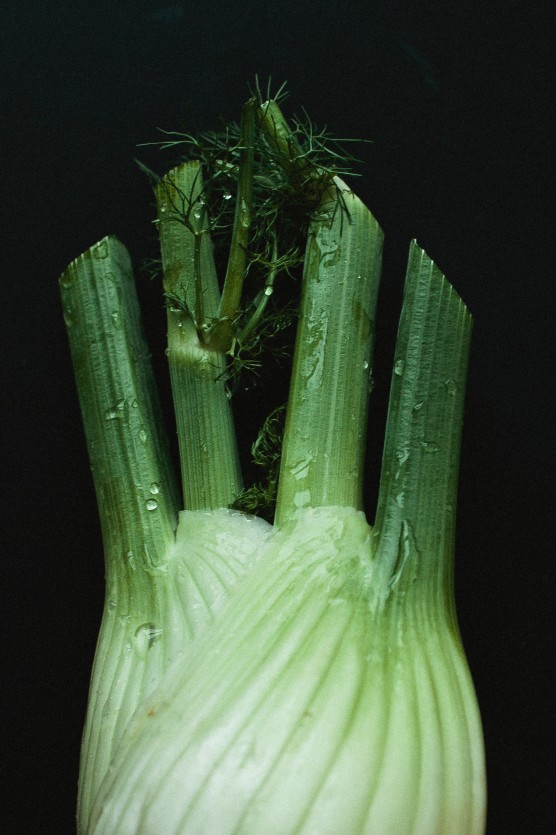
America’s Test Kitchen sent me the FAGOR Duo Stainless Steel 8-Quart Pressure Cooker
to experiment with in preparation for their forthcoming book, “Pressure Cooker Perfection”
(available to pre-order now, released in March). What you are about to read is my experience with the pressure cooker using one of the recipes from the new book. I was not harmed, nor was anyone else, well, except for the pork used in the recipe. But I assure you it was well loved.
When my boys have to venture somewhere a bit scary; whether it’s the garage, upstairs when the lights are off or a new friend’s house, they like to travel as the pair. Even at a young age they know that there is safety in numbers, so I’m taking their cue and asking you to be with me as I do something that I find a bit scary – use a pressure cooker.
At this point I know nothing of pressure cooking except that it uses pressure to cook which somehow makes the process faster and that I’ve seen a couple of them bubble, spurt and explode. It may have been on cartoons where I saw this but it still has made me feel anxious about the idea. But you’re here and I’m under the highly respectable guidance of the fine people at America’s Test Kitchen. So, I’m feeling okay and yet I have the odd desire to don some goggles and a helmet.
It’s unlike me to start with reading through directions in their entirety but in this case I think it best. Immediately there’s a bit of relief as I read, “Why you should own a pressure cooker” from the forthcoming book by America’s Test Kitchen. The number two reason says,
“They’re safe: You’ve heard the old stories about exploding pressure cookers and meals that ended up on the ceiling instead of the dinner plates. But that was yesterday. If too much pressure builds up in one of today’s pressure cookers, there are multiple safety features that allow that excess pressure to escape safely – and without creating a mess.”
I already feel better. A few of the other reasons; it’s fast, more concentrated flavors and it is economical as it requires less energy and you can really utilize the tough cuts of meat and dried beans which are often quite a bit cheaper.
All right, I’m cooking now. I read MOST of the instructions and I think it’s safe to proceed. I just put the lid on and have not taken my eyes off of it as I’m waiting for the pressure valve to lift its head to tell me that high pressure has been reach. At that point I reduce the heat and let it cook for 30 minutes. Wait a minute. Have I even told you what you are cooking with me? We are making a French Pork Stew using 3 pounds of pork butt and dried beans (soaked overnight) and they tell me it will be done in 45 minutes. Can you read my skepticism?
Did you hear that? Is it suppose to hiss like that? “Kids, get OUT of the kitchen!”
Little drops of condensation fall from the black handle. Everything this pot does; steam escaping from the sides or the loud hissing sound that continues – I question.
Ten minutes of cooking time left.
If at the end of all of this we have a stew that is flavorful with tender chunks of pork, soft and fragrant beans then I feel I’ve unleashed a weeknight hero. Suddenly Monday through Friday nights are filled with possibility. A large roast on Tuesday? Tender beets and potatoes on Thursday cooked in under 20 minutes? Friday night Risotto without all the stirring? If this is the case then all my nervousness, anxiety over steam and hissing would be worth it for meals that taste as if I’ve actually planned dinner well in advance.
There’s a lot of pressure all around. Except for Ivy. She’s calmly sitting next to me consulting with Elmo who also doesn’t seemed to be phased by the steam engine-like sound coming from the kitchen.
Three minutes left.
The pressure is off! Well, almost. I just turned off the heat and for the next 15 minutes the pressure that has built up is slowly being released naturally.
My house smells better than expensive French perfume. It’s meaty and bright with white wine. Fragrant wafts of lavender and rosemary escaped through some of the steam and have me reaching for a glass of wine. It’s not too early, right?
Fifteen minutes have now passed and the pressure valve still shows high pressure so with shaky hand I slide the black knob on top to the picture of a steam cloud. An appropriate image as once the pressure has been released steam pours out as if it were an active volcano. It shoots safely behind the pot.
The volcano has stopped. The valve is now lowered telling me that the pressure is off. Along with the steam more fragrance fills the air and my stomach moans in anticipation. For a mere 45 minutes I eagerly waited to taste and now is when I wish you REALLY were here with me because, you guys, it’s amazing. Even better than I had hoped. It doesn’t just taste as if its been on the stove for hours, it tastes as it it was on the stove for hours the day before because we all know stews are better the day after. The carrots taste sweeter, the meat is incredibly tender and the broth is thick and rich. It’s a quick weeknight meal that tastes good enough for Sunday dinner.
And just like that I’m a believer. Turns out all the hissing and steam – perfectly normal. Oh pressure cooker, I’m really sorry I ever doubted you and spent all those wasted years being afraid of you. I blame cartoons.
French Pork Stew with White Beans
Rustic French Pork and White Bean Stew
This recipe comes right from the new book. Being a bit nervous about the whole thing I stuck to the recipe pretty much exactly except for the addition of some Juniper berries and I added 2 teaspoons of herbes de provence rather than the 1 1/2 teaspoons they suggest.
SERVES:
6
PRESSURE LEVEL:
HIGH
TOTAL TIME:
ABOUT 1 1/2 HOURS (plus bean soaking time)
RELEASE:
NATURAL
30 MINUTES
UNDER PRESSURE
WHY THIS RECIPE WORKS
This French-inspired dish, with chunks of pork, creamy white beans, fennel, and carrots, tastes like it simmered all day, yet the pressure cooker makes it doable on a weeknight—even with dried beans in the mix.To keep the cooking time down, we browned only half the meat and still built enough flavorful fond on the bottom of the pot to season the stew.We continued to build a base with sautéed onion, garlic, and herbes de Provence before deglaz- ing the pot with white wine.To ensure each component cooked through evenly, we cut the carrots and fennel into large 1-inch pieces and salt-soaked the beans. Once everything was tender, parsley and lemon juice went in to brighten the flavors. Pork butt roast is often labeled Boston butt in the supermarket.
INGREDIENTS
3 pounds boneless pork butt roast, trimmed and cut into 1-inch pieces
2 tablespoons vegetable oil
2 onions, chopped
1 fennel bulb, stalks discarded, bulb halved, cored, and cut into 1-inch pieces
8 garlic cloves, minced
1 ½ teaspoons Herbes de Provence
1 pound carrots, cut in 1” chunks
⅓ cup flour
1 cup white wine
3 cups low-sodium chicken broth
8 ounces (11⁄4 cups) dried cannellini beans, picked over, rinsed, and salt-soaked (soaked overnight in salted water)
2 bay leaves
1⁄4 cup minced fresh parsley
1 tablespoon lemon juice, plus extra as needed
1. BUILD FLAVOR: Pat pork dry with paper towels and season with salt and pepper. Heat 1 tablespoon oil in pressure-cooker pot over medium-high heat until just smoking. Brown half of meat on all sides, about 8 minutes; transfer to bowl.
2. Heat remaining 1 tablespoon oil in now-empty pot over medium heat until shimmering.Add onions and cook until softened, about 5 minutes. Stir in gar- lic and herbes de Provence and cook until fragrant, about 30 seconds. Stir in flour and cook for 1 minute.Whisk in wine, scraping up any browned bits and smoothing out any lumps, and cook until slightly reduced, about 1 minute. Stir in broth, carrots, fennel, soaked beans, bay leaves, browned pork with any accumulated juices, and remaining pork.
3. HIGH PRESSURE FOR 30 MINUTES:
Lock pressure-cooker lid in place and bring to high pressure over medium-high heat.As soon as pot reaches high pressure, reduce heat to medium-low and cook for 30 minutes, adjusting heat as needed to maintain high pressure.
4. NATURALLY RELEASE PRESSURE:
Remove pot from heat and allow pressure to release naturally for 15 minutes. Quick release any remaining pressure, then carefully remove lid, allowing steam to escape away from you.
5. BEFORE SERVING: Remove bay leaves. Using large spoon, skim excess fat from surface of stew. Stir in parsley and lemon juice and season with salt, pepper, and extra lemon juice to taste. Serve.
TROUBLESHOOTING
Can I substitute canned beans for the dried?
Can I use chicken instead of pork?
Do I need to alter the recipe for a 6-quart electric pressure cooker?
Yes, although the final stew will not be as thick since the dried beans soak up some of the liquid, and we also found the flavor wasn’t as developed. Before adding the parsley and lemon juice in step 5, stir 2 (15-ounce) cans of rinsed cannellini beans into the stew and simmer until the beans are heated through, about 5 minutes.
Boneless chicken thighs would work fine, although we found they release more juices than the pork and thus create a looser stew. Substitute an equal amount of boneless thighs, cut into 1-inch pieces, for the pork butt and reduce the pressurized cooking time to 20 minutes.
Yes, turn the cooker off immediately after the pressurized cooking time and let the pressure release naturally for 15 minutes; do not let the cooker switch to the warm setting.
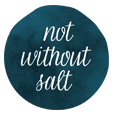





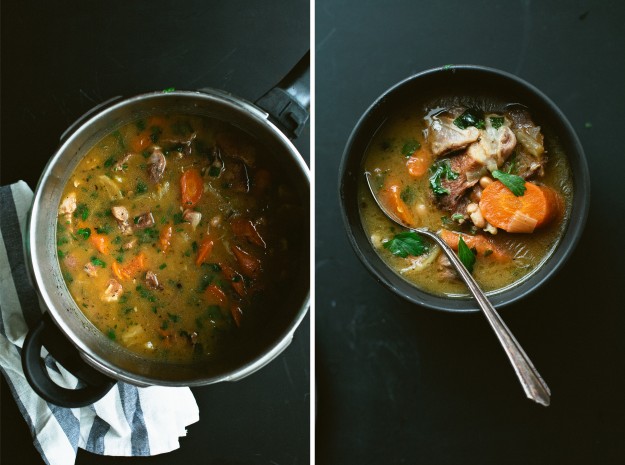

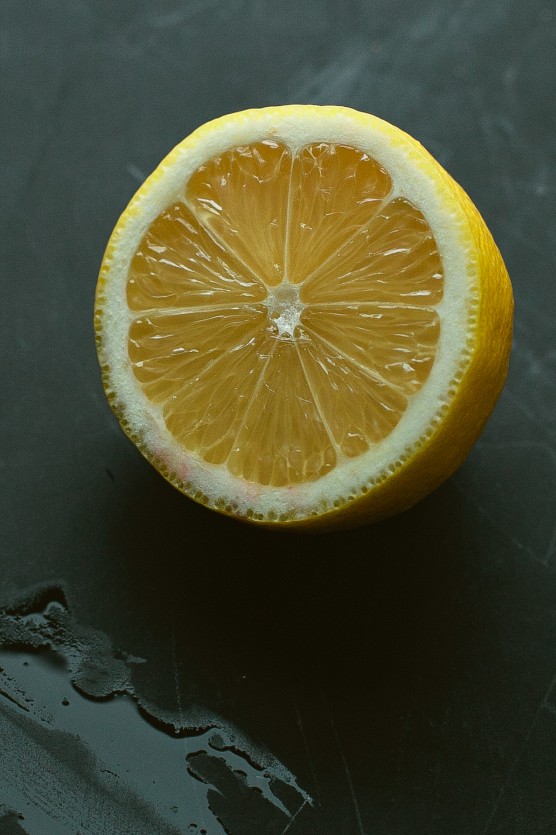
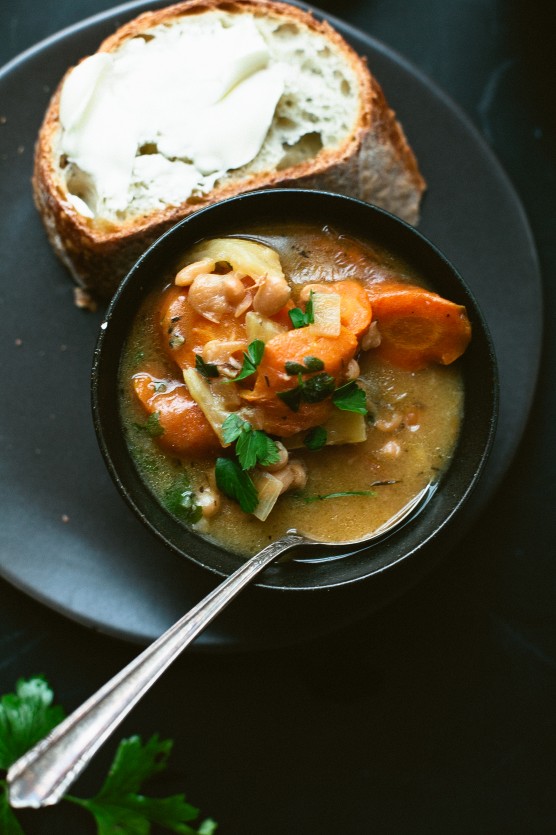








So…recently we soaked some chickpeas overnight hoping to improve a recipe that called for canned. Well, even after the third leftover meal the chickpeas were still hard and crunchy.
So? Cannellonis instead of chickpeas? Or would the pressure cooker make all the differeence?
Nick – I don’t think it depends on what bean you use but just realize that each one cooks differently. If the chickpeas were still firm I’d say boil them for longer next time. The pressure cooker only affects how much time to cook is needed but beans can definitely be tender and delicious without it.
Nick, chickpeas (also known as garbanzos) take a lot longer to cook, even in a pressure cooker, than cannellini beans. Normally takes about an hour, assuming you are at sea level, and depending on your elevation, may take longer. I would pressure cook the chickpeas for at least 30 minutes by themselves, before adding them to the stew.
A definite crowd pleaser for a winter’s lunch. I do a similar version with lamb 🙂
City – ohhh lamb. Yes, I’d like that very much.
I love using pressure cooker for beans and lentils especially. In Indian cooking, we are used to use pressure cooker for a lot of stuff. Time saver and indeed a life saver!
My mum had a pressure cooker and used it all the time with great success. When I got engaged I was given one and I have been using it for years now, for meat, beans even to steam puddings and I find it extremely useful. Instead of slow cooking for hours and hours you pressure cook in a fraction of the time.
Ohhh! How I have forgotten about the pressure cooker! I was a Nanny in France for several years, which is where I learned the Art of cooking and the ARt of Eating Delicious Food (mmmmmm…..) but was always intimidated by the pressure cooker. Thanks so for the details on this, perhaps it is time to save up for one…& thanks for wonderful recipe as well.xxoo
Becca – I didn’t realize the French used them? Now I think it’s even cooler.
Pressure cookers are very popular in Europe because apparently the energy costs are sky high, so they save where they can.
I can’t wait to taste that stew. I will have to see if I can squeeze a pressure cooker into my tiny kitchen without it exploding. Lovely post as always.
Jana – My kitchen is tiny too but I think it’s totally worth the prime real estate it will take up.
Ashley, this looks amazing. I love to use our pressure cooker, and this looks like a perfect recipe to chase the cold weather away.
Whitney – I’m sort of envious of those who already knew the joys of a pressure cooker. Where was I? What else do you like to make in your pressure cooker?
ohhhh, baby. Soft, tender pork, creamy beans, bright fennel. This is the stew of my French country-side fantasies. But I’m just like you – everything about a pressure cooker scares the bejeezus out of me.
Sarah – I’m not like that anymore! I used it yesterday to make chili for the superbowl and it was amazing. Done in 30 minutes. Don’t be afraid!
Oh, yes they can still explode!! Ask my BFF! Glad you ventured out and created this! Will definitely try… Love my pressure cooker! Super healthy for veggies!! Can’t wait to get the recipe book, too!!
Dawn – Oh dear. I don’t think I want to know that story. 🙂
Eric just brought home a pressure cooker that his father had… Between you and me, I’m a little scared to use it. I think it’s gotta be a wonderful way to cook beans and such, but I’m nervous it’s going to explode on me.
Hearty dishes like this make me rethink my pescatarianism… I can only imagine how amazing your house smelled while this was cooking.
I had the exact same fears of pressure cookers before reading this… now I feel like I need one! This stew sounds so delicious, and to have it on a weeknight… sounds like magic. Thanks for de-mystifying the pressure cooker for the rest of us!
what a wonderful winter recipe. Im cold and craving a bowl of this right now.
This is absolutely stunning. I just need to figure out a way to get my entire head in that.
This is so awesome, Ashley. I need to get on that pressure cooker situation. I’ve wanted one for what feels like forever. Who wouldn’t want pulled pork–or in your case, French pork stew–in under an hour? LOVE.
Beautiful photos, I followed the link from the food52 tweet.
I learned how to pressure cook following a website called hip pressure cooker. All their recipes have step-by-step photos and they have a teaching series that starts with boiling potatoes and finishes with making a cake in the pressure cooker.
Wow.. I wish ATK sent me a pressure cooker AND a book!!
It must be lost in the mail. ; )
Ad
I have been cooking with a pressure cooker for at least 10 years now, and once you get over the initial worries, it really is a great way to go. Chicken broth made using this method is unbeatable. You get a flavorful broth and the chicken is still tender enough to enjoy in the soup.
I tried this recipe last night and just loved it. Thanks for sharing!
I love how you wrote this post. I feel like I’m right in the kitchen with you. I’ve never used a pressure cooker either but it sounds very useful. The stew sounds wonderfully comforting.
I don’t eat meat but I do eat plenty of beans that are pressure cooked. I have been teaching pressure cooking for 17 years. A year ago, I came out with a pressure cooking cookbook: The New Fast Food: The Veggie Queen Pressure Cooks Whole Food Meals in Less than 30 Minutes which has charts on how to cook all kinds of beans.
You can’t beat 6 to 10 minutes of cooking for presoaked beans, other than garbanzo beans which take 12 to 14 minutes at pressure, with a natural pressure release.
I would NOT use an older model pressure cooker unless forced to do so. I love the modern pressure cookers.
Thanks for introducing your readers to the best new, and old, way to cook for great tasting food fast or “The New Fast Food”.
I love my six quart Fagor, it’s my favorite kitchen tool! Potato Leek soup, Chicken Vegetable soup, Kale Potato casserole, Swedish meatballs, brown rice, chickpeas…. the list goes on and on. I’ve bought them as christmas and birthday presents, and tell everyone who will listen about the wonders of pressure cooking. If you’re thinking about buying one, go for it — you’ll love it.
I love my pressure cooker! I live at 6500 feet which makes it almost a necessity.
Great site! I will try this on the weekend…
I love my pressure cooker. I use it all the time to make hearty vegetable soups on a weekday at lunch time – in not much more time than it takes to make grilled cheese! Mine’s not very big, though, I need a heftier one so that I can make things like THIS!
I fell in love with pressuring cooking today. Your stew looks amazing! I just pre-ordered this cookbook.
So so glad you faced the enemy….and won!!!! I’ve been so tempted to experiment with the mighty pressure cooker with all its promises of intense flavors whipped up in a jiff. Your bravery and success gives me courage…and hunger pains!
If I wanted to cut this recipe in half, would I also reduce the cooking time by half?
No, you wouldn’t want to reduce the cooking time. The time will already reduce somewhat because of the smaller volume (the smaller amount of food will come up to pressure more quickly, and I think the pressure will go down more quickly as well) so there’s automatically some adjustment because of less volume.
My husband and I got our first pressure cooker a few months ago! We use it endlessly! It has become, by far, one of our favorite kitchen tools!
Man! What an adventure with steam. So great. But what’s even better is the color of that broth and the fact that there is fennel in it. Fennel. A day like today really needs a rich root vegetable like that.
Oh goodness, my boys (by boys I mean my husband and adult brother who I feed at least three days a week) would love this! I am so glad to hear someone else share their first time story of being terrified (I swear every time I can anything that the silly thing will explode).
I’ve always been afraid of using pressure cookers, too! I’ve just always had this irrational fear that they’ll randomly combust and send boiling hot stew all over my kitchen. BUT, I see it worked quite well for you, and that flavor combination sounds wonderful (I’ve never heard of combining pork and lavender before, delicious!) and of course the photos look beautiful as well 🙂
Tracy,
You asked about changing the cooking time in half if you halve the recipe. Here is one of the best things about a pressure cooker – you don’t have to adjust the cooking time if you halve a recipe, or double it or triple it. You have to pay attention to not overfill the pot but you can cook a small amount.
The pressure cooker self-adjusts the time by coming to pressure sooner if there is less in the pot. You do not have to do any calculations.
People ask me this quite frequently but it’s not an issue, unless there is so little in the cooker that it cannot maintain pressure. This is not likely to happen.
Enjoy cooking a smaller amount.
BTW, Ashley, I just wanted to comment what beautiful photographs you have. Quite lovely. ;D
This looks sooooo good!
This photography is stunning. Food is art.
Hi, it looks really yummy but can someone explain to me the “3 cups low-sodium chicken broth” ingredient? How do you make that? Thanks in advanced!
You can buy low-sodium chicken broth at any grocery store. If you want to make your own that’s great. Here is a recipe: http://www.foodnetwork.com/recipes/ina-garten/chicken-stock-recipe.html
Thanks, also, our pressure cooker is one where you can’t open it once it starts. So, I’m not sure how I’ll be able to make the stew…
The instructions were very clear to me, but I got the impression that only the pressure cooker is used to make this stew in every step, right?
Sorry, I meant *weren’t* very clear
This reminds me of what my mom used to make. I’m not an expert at cooking like her but she gave me her pressure cooker and I ended up buying a few recipe books to learn how to pressure cook. And now I love to pressure cook and make meals with it all the time. If you’re new to pressure cooking start here. The blog is maintained by some chefs and they teach everything about pressure cookers.
I would love to make this without pre-soaking the beans. What do you think? Any interest in testing that out for the rest of us? I now make several kinds of beans in my pressure cooker without pre-soaking, and I love the flexibility it gives me. I’m just worried about how everything else would behave if I increase the time to accommodate the beans…
Holy Guacamole this was amazing! I didn’t have soaked beans so I boiled and soaked them while I prepped. Adults and kids alike begged me to make it again. Daughter has Celiac so I thickened with cornstarch in the stock.